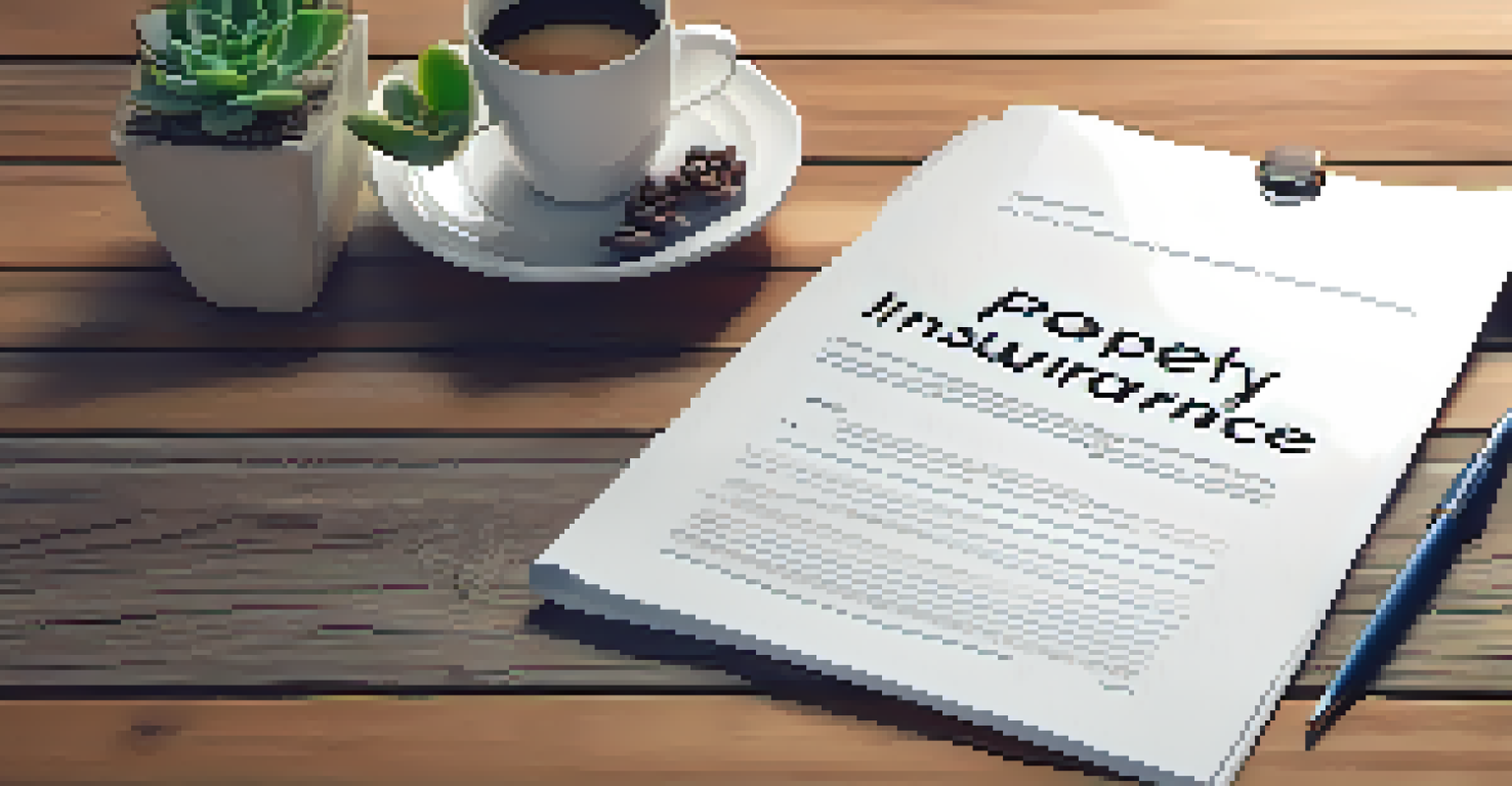Best Practices for Handling Property Damage Claims

Understanding Property Damage Claims: What You Need to Know
Property damage claims can arise from various incidents, such as natural disasters, accidents, or vandalism. Understanding the basics of these claims is crucial for property owners. It helps to be aware of what constitutes property damage and the different types of insurance policies that might cover such incidents.
An ounce of prevention is worth a pound of cure.
When a claim is filed, it typically involves a detailed assessment of the damage and the costs to repair it. Familiarizing yourself with the claims process can save you time and frustration down the line. Remember, knowing the ins and outs of your policy will empower you when it comes time to file a claim.
Ultimately, having a solid grasp of property damage claims will not only reduce stress but also increase your chances of a successful resolution. Being informed is your best first step.
Documenting Damage: Your Best Friend in Claims Process
After experiencing property damage, the first thing you should do is document everything. This includes taking photographs of the damage, making notes of what occurred, and recording any conversations with witnesses or service providers. Clear documentation serves as tangible evidence to support your claim.

Consider creating a detailed inventory of damaged items, including their value and purchase date. This not only helps in the claims process but also provides a personal record of your belongings. The more thorough your documentation, the better prepared you will be when discussing the claim with your insurance company.
Document Everything Thoroughly
Comprehensive documentation of property damage is essential for supporting your insurance claim.
In short, good documentation can make or break your claim. It provides clarity and helps to support your case, making it easier for all parties involved.
Contacting Your Insurance Company: Key Steps to Take
Once you've documented the damage, the next step is to contact your insurance company as soon as possible. Prompt reporting can expedite the claims process and ensure you receive the assistance you need. When you call, have your policy number and documentation ready to share.
Documentation is a love letter that you write to your future self.
It’s vital to be clear and concise when explaining the situation to your claims adjuster. Provide them with all the relevant details, including the timeline of events and any immediate actions taken to mitigate further damage. This transparency helps build trust and facilitates a smoother claims process.
Remember, your insurance agent is there to help you navigate this process. Don’t hesitate to ask questions or request clarification on any part of your policy or the claims process.
Understanding Your Policy: Know What’s Covered
Insurance policies can be complex, but understanding what is covered is essential. Review your policy to identify the specific types of damage that are included and any exclusions. Knowing the limits of your coverage can help set realistic expectations.
Many people are surprised to find that certain types of damage, like flooding or earthquakes, may require additional coverage. If you’re unclear about your policy, consider scheduling a meeting with your insurance agent to clarify these details. Being proactive can prevent headaches later on.
Understand Your Insurance Policy
Knowing the specifics of your coverage will help set realistic expectations during the claims process.
Ultimately, having a clear understanding of your policy empowers you to make informed decisions throughout the claims process. It’s all about knowing your rights and responsibilities as a policyholder.
Working with Adjusters: Building a Collaborative Relationship
Insurance adjusters play a critical role in the claims process, as they assess the damage and determine the payout. Building a good rapport with your adjuster can significantly impact your claims experience. Always approach them with respect and provide them the information they need to do their job effectively.
If you disagree with their assessment, don’t hesitate to voice your concerns. Having your documentation ready can support your case and facilitate constructive discussions. Remember, adjusters are professionals trained to evaluate claims, so engaging them positively can lead to better outcomes.
In many ways, think of your adjuster as a partner in resolving your claim. A collaborative approach can help both parties reach a satisfactory resolution.
Handling Disputes: Steps to Take When Claims Are Denied
Sometimes, claims may be denied or not fully covered, which can be incredibly frustrating. If you find yourself in this situation, don’t panic. First, review the denial letter carefully to understand the reasons for the decision. This information will be crucial as you navigate your next steps.
You can appeal the denial by providing additional documentation or evidence to support your claim. Be sure to follow the appeals process outlined by your insurance company, as each company may have different procedures. Providing a detailed, well-organized appeal can strengthen your case.
Build a Good Relationship with Adjusters
Collaborating positively with insurance adjusters can lead to smoother claims and better outcomes.
If the appeal process does not yield results, consider seeking assistance from a public adjuster or a legal professional. Sometimes, having an expert on your side can make all the difference in securing a fair resolution.
Preventive Measures: Safeguarding Against Future Damage
After dealing with a property damage claim, it’s wise to take preventive measures to safeguard against future incidents. This includes regular maintenance checks on your property, such as inspecting roofs, plumbing, and electrical systems. Proactive upkeep can minimize the risk of damage over time.
Consider investing in home improvements that may enhance your property’s resilience, such as storm-proof windows or better drainage systems. These changes not only protect your property but may also lead to lower insurance premiums. It’s a win-win situation.

Ultimately, being proactive can save you both time and money in the long run. Prevention is often far less costly than dealing with damage after it occurs.
Final Thoughts: Navigating Property Damage Claims with Confidence
Handling a property damage claim can be a daunting task, but with the right knowledge and approach, it becomes much more manageable. By understanding the claims process and being proactive, you can navigate this challenging situation with confidence. Remember that thorough documentation and open communication with your insurance company are key.
Additionally, always take the time to understand your policy and build a good relationship with your adjuster. These factors can significantly influence the outcome of your claim. If disputes arise, know that there are steps you can take to address them effectively.
In the end, being prepared and informed is your best defense against the stress of property damage claims. Equip yourself with the right tools and knowledge to turn a challenging situation into a manageable one.